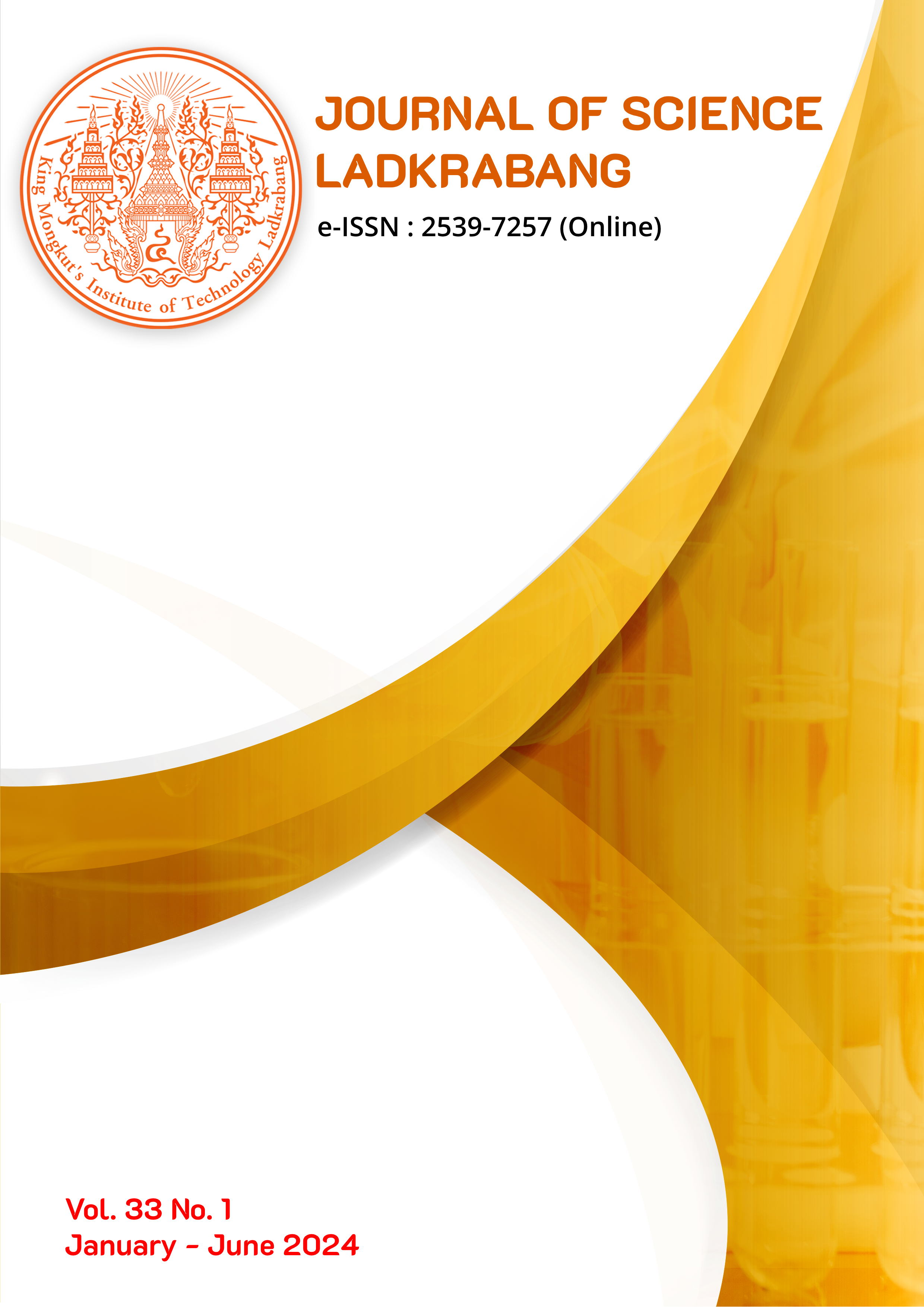A Mathematical Model of Melioidosis Transmission with Effect of Wearing Boots
Main Article Content
Abstract
Melioidosis is a major public health problem in almost tropical countries. Melioidosis is an infectious disease caused by bacterium from contaminated water sources and soil. Most of the patients are farmers who are at risk of infection through contact with soil and water while working. In this research, we developed and analyzed a mathematical model of melioidosis transmission with effect of wearing boots. We founded two equilibrium points: the disease-free equilibrium point and the epidemic equilibrium point. The stability conditions of both equilibrium points, which depended on the basic reproductive number (RO) and Ri when i = 1, 2 ,3, were investigated. The disease-free equilibrium point is locally asymptotically stable when R0<1 and R1<1, whereas the endemic equilibrium point is locally asymptotically stable when R0>1, R2>1 and R3>1. In conclusion, the numerical analysis showed that wearing boots is the factors affecting the control of melioidosis epidemic. Therefore, wearing boots should be encouraged to reduce the spread of melioidosis.
Article Details

This work is licensed under a Creative Commons Attribution-NonCommercial-NoDerivatives 4.0 International License.
References
กองโรคติดต่อทั่วไป กรมควบคุมโรค. 2564. คู่มือโรคเมลิออยด์. สำนักพิมพ์อักษรกราฟฟิคแอนด์ดีไซน์, กรุงเทพฯ. [Division of Communicable Diseases Department of Disease Control. 2021. Guideline of Melioidosis. Graphic and Design Publishing, Bangkok. (in Thai)]
Infectious Diseases Society of America. 2023. Melioidosis outbreak in Hong Kong: What is the cause?. Available at: https://www.idsociety.org. Retrieved 17 March 2023.
Thailand reports increase in melioidosis in 2022. 2022. Available at: http://outbreaknewstoday.com/thailand-reports-increase-in-melioidosis-in-2022/. Retrieved 30 March 2023.
กรมควบคุมโรค. 2566. พยากรณ์โรคและภัยสุขภาพรายสัปดาห์ ฉบับที่ 11/2565 “เตือนประชาชนระวังป่วยโรคเมลิออยโดสิสคนที่มีแผล ควรเลี่ยงการเดินลุยน้ำย่ำโคลน”. แหล่งข้อมูล : https://ddc.moph.go.th/. ค้นเมื่อวันที่ 30 มีนาคม 2566.
ศูนย์วิจัยโรคเมลิออยโดสิส. 2557. รายงานประจำปี 2557. คณะแพทยศาสตร์, มหาวิทยาลัย ขอนแก่น, ขอนแก่น. [Center of Melioidosis Research. 2014. Annual Report 2014. Faculty of Medicine, Khon Kaen University, Khon Kaen. (in Thai)]
Mahikul, W. et al. 2019. Modelling population dynamics and seasonal movement to assess and predict the burden of melioidosis. PLOS Neglected Tropical Diseases, 3(5), 1-15, https://doi.org/10.1371/journal.pntd.0007380.
พรวิลัย ชาญกิจกรรณ์ และพันธนี พงศ์สัมพันธ์. 2563. แบบจำลองทางคณิตศาสตร์การระบาดของโรคเมลิออยโดสิสจากสัตว์สู่คนโดยพิจารณาจากผลกระทบปัจจัยปริมาณน้ำฝน. วารสารวิทยาศาสตร์ประยุกต์, 19(1), 80-94, https://doi.org/10.14416/j.appsci.2020.01.007. [Pornwilai Chankitkan and Puntani Pongsumpun. 2020. A mathematical model of melioidosis transmission in humans and animals with the effect of a rainfall factor. The Journal of Applied Science, 19(1), 80-94, https://doi.org/10.14416/j.appsci.2020.01.007. (in Thai)]
Hinjoy, S. et al. 2018. Melioidosis in Thailand: Present and future. Tropical Medicine and Infectious Disease, 3(38), 1-16, https://doi.org/10.3390/tropicalmed3020038.
Pongsumpun, P. 2020. Transmission model of Burkholderia Pseudomallei infection in Thailand.Proceedings 20th PATTAYA International Conference on Science, Engineering, Technology & Natural Resources (SETNR-20), Pattaya, Thailand, 11-16, https://doi.org/10.17758/URUAE12.UL08201027.
Engida, H.A. et al. 2022. A mathematical model analysis of the human melioidosis transmission dynamics with an asymptomatic case. Heliyon, 8(11), 1-16, https://doi.org/10.1016/j.heliyon.2022.e11720.
Tavaen, S. and Viriyapong, R. 2019. Global stability and optimal control of melioidosis transmission model with hygiene care and treatment. NU. International Journal of Science, 16(2), 31-48, https://doi.org/10.1504/IJMIC.2020.112294.
van den Driessche, P. and Watmough, J. 2002. Reproduction numbers and sub-threshold endemic equilibria for compartmental models of disease transmission. Mathematical Biosciences, 180, 29-48, https://doi.org/10.1016/S0025-5564(02)00108-6.
Edelstein-Keshet, L. 1988. Mathematical Models in Biology. Random House Publisher, New York.
Pongsumpun, P. 2017. Mathematical model of Influenza with seasons in Thailand. Proceedings of the 6th Burapha University International Conference 2017, Bangsaen, Chonburi, Thailand, 494-502.
Khan, M.A., Islam, S. and Khan, S.A. 2014. Mathematical modeling towards the dynamical interaction of leptospirosis. Applied Mathematics & Information Sciences, 8(3), 1049-1056.

